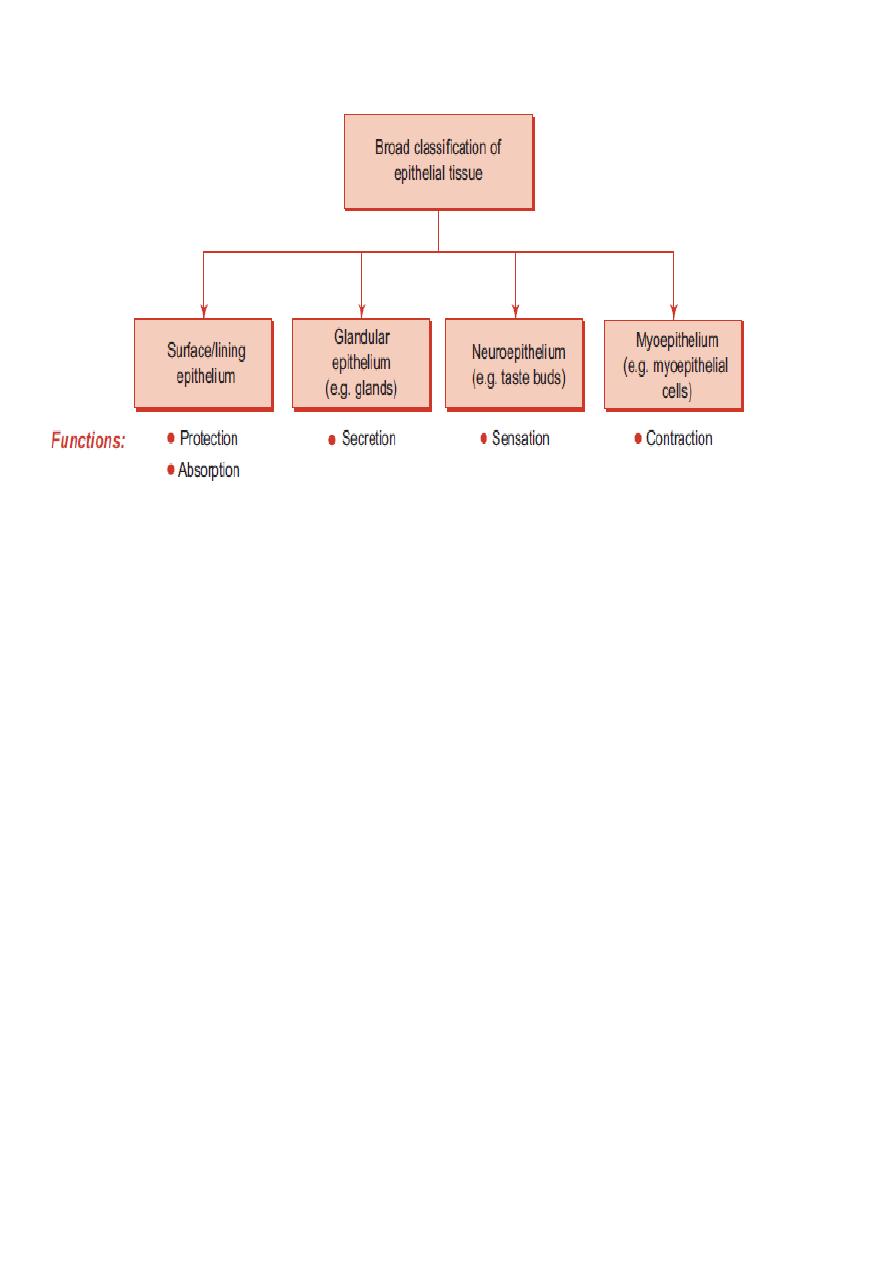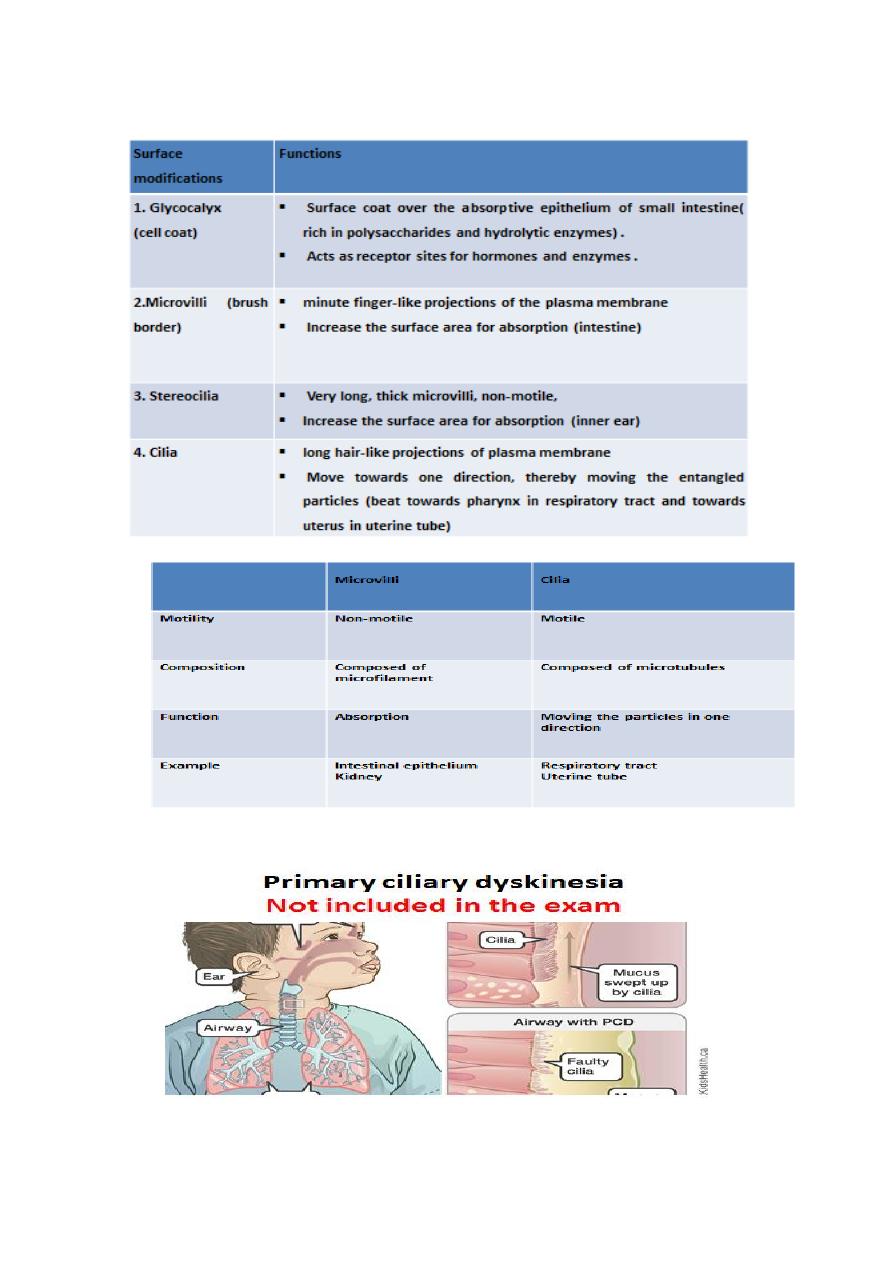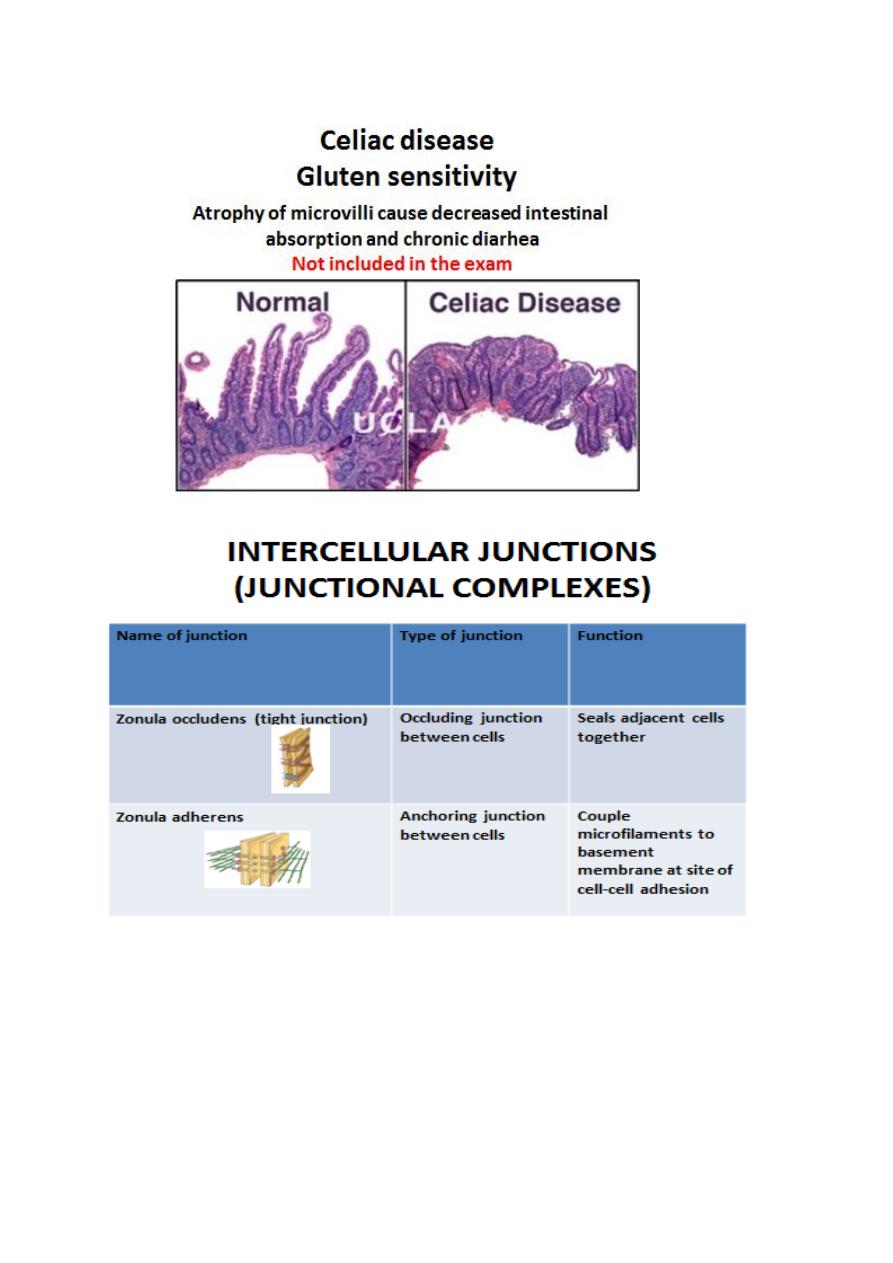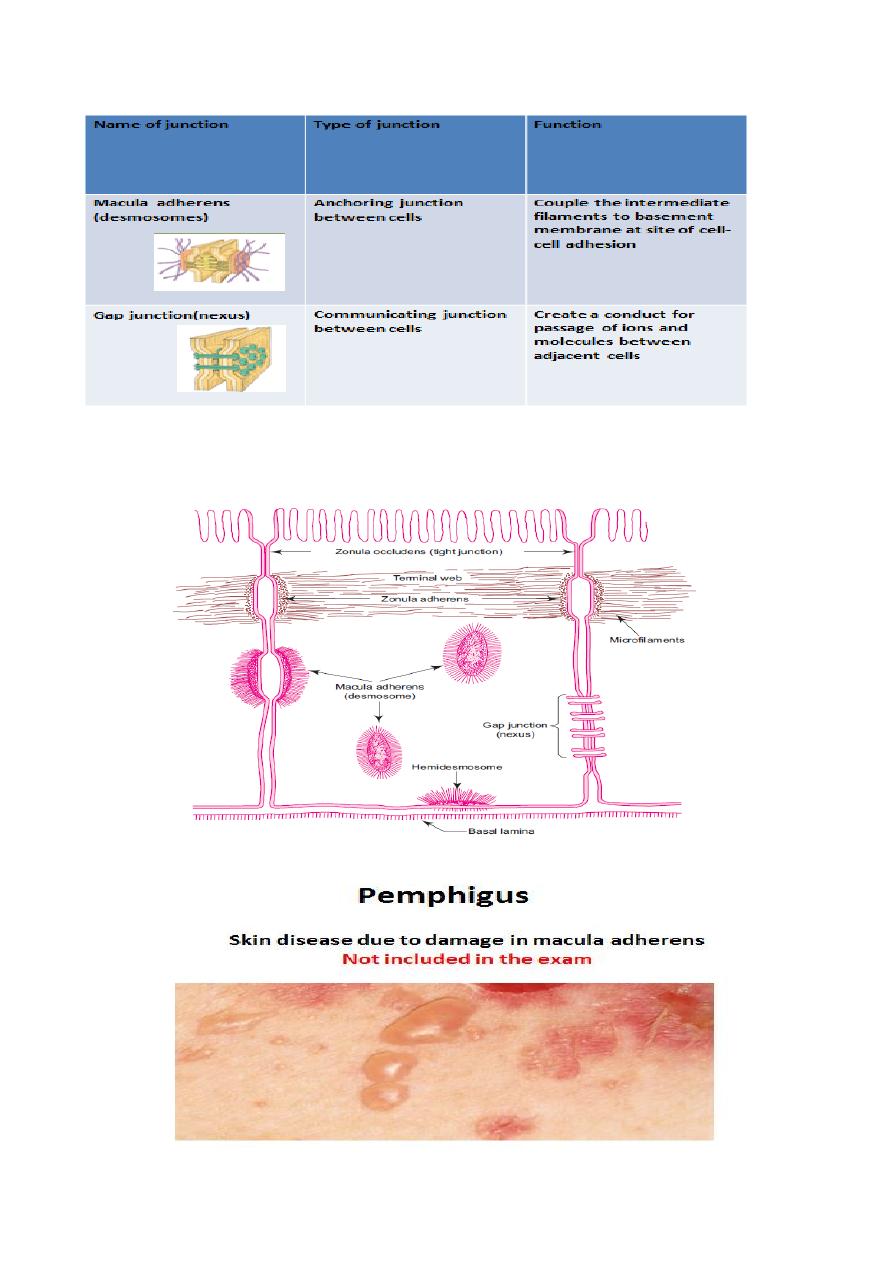
Lecture one
Epithelial tissue
By Dr.Alaa Al-sahlany
Tissues are aggregates or groups of cells organized to perform one or more specific
functions
There are four basic types of tissue:
(1)Epithelium (epithelial tissue): covers body surfaces, lines body cavities, and
forms glands.
(2)Muscle tissue: is made up of contractile cells and isresponsible for movement
(3)Nerve tissue: receives, transmits information to control the activities of the
body
(4)Connective tissue: underlies or supports the other three basic tissues
Epithelial tissue
Epithelium covers body surfaces, lines body cavities, and constitutes glands
The cells that make up epithelium have three principal characteristics:
(1)They adhere to one another by intercelular junctions
(2)They exhibit polarity: apical polarity(surface), a lateral polarity, and a basal
polarity.
(3) Their basal surface is attached to an underlying basement membrane
Basement membrane
Is a specialized structure located next to the basal part of epithelial cells and the
underlying connective tissue stroma.

Epithelium, the ‘cellular sheet’, is made of either single layer (simple) or many
layers of cells (stratified)
No blood vessels nor lymphatics are found in the epithelium; nourishment is
provided by diffusion from the adjacent supporting connective tissues.
Epithelium has good regenerative capacity.
The epithelial cells are subdivided according to the shape into (a)columnar where
the height is more than the width (2) squamous where the width is more than the
height and (3)cuboidal where the height is equal to the width
Its nuclear shape corresponds to cell shape (nuclei are oval in columnar cells, round
in cuboidal , and flat in squamous cells).
Epithelium can invaginate and subsequently grows into glands.
Epithelium may undergo morphological and functional changes from one type to
another type(metaplasia)
Epithelium is derived from all three germ layers:
Skin – ectoderm
Respiratory and digestive systems – endoderm
Cardiovascular system – mesoderm
The superficial surface (apical) of the epithelium is free and exposed to air or fluid
and often shows modifications (i.e. presence of microvilli or cilia) depending upon
the function it is destined to perform
Surface modifications are listed in the next table:



